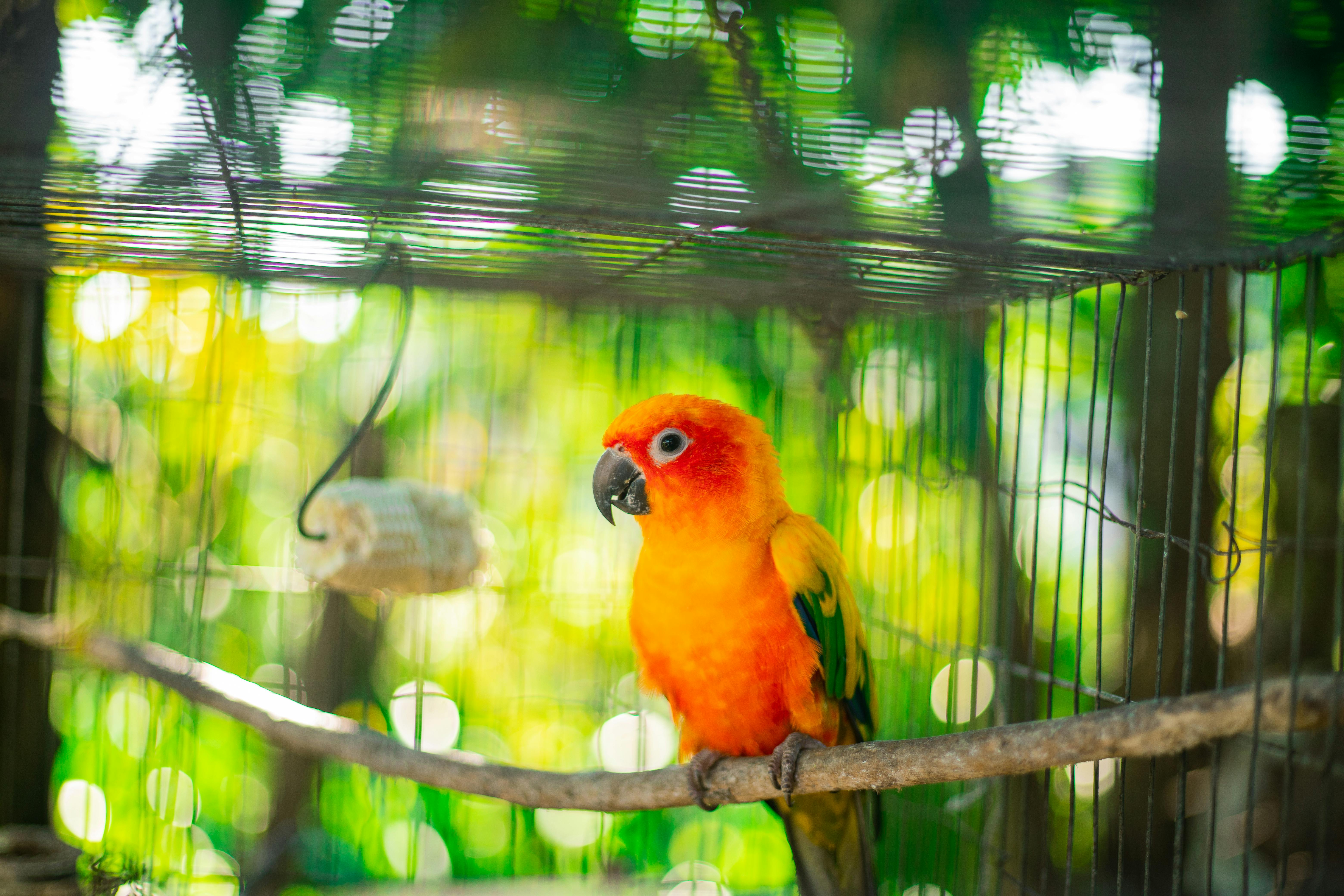Comprehensive Guide to Hamster Care: Essential Tips for 2025 Success
Hamsters have been beloved pets for generations, cherished for their small size, delightful personalities, and relatively easy care requirements. In this comprehensive guide, we delve into the essential aspects of hamster care to ensure your furry companion thrives in the upcoming years. Understanding how to create a nurturing environment, provide proper nutrition, and promote overall health are crucial for any hamster owner, especially in 2025.
Owning a hamster brings numerous rewards, particularly when it comes to fostering a child's sense of responsibility and empathy. These little creatures can teach valuable lessons about pet care, all while offering companionship and entertainment. In this article, we will cover various topics, including selecting the right hamster breed, setting up a hamster habitat, and maintaining hamster health through proper diets and grooming practices.
This guide will provide you with actionable tips and tricks for ensuring your hamster has a happy and fulfilling life. By the end of this article, you'll be equipped with everything needed to create an ideal living space for your hamster, as well as insight into their behavior and needs.

Essential Guide to Creating the Perfect Hamster Habitat
Building a proper hamster habitat is foundational for a happy and healthy pet. The right environment ensures that your hamster feels safe and comfortable, allowing their natural behaviors to flourish.
Choosing the Right Housing for Your Hamster
When selecting a hamster cage, size matters. A larger space provides more room for activities, and allows your hamster to explore and engage in exercise. Popular options include wire cages, glass aquariums, and DIY hamster habitats. Ensure there are safe spaces for burrowing and climbing so your hamster can express their natural instincts.
Essential Bedding Materials
Choosing the correct bedding is pivotal for your hamster's health. Safe materials such as aspen shavings, paper-based bedding, or fleece ensure a comfortable living surface while controlling odors. Avoid using cedar or pine shavings, as they can emit harmful fumes. Regularly replacing bedding helps maintain hygiene and improve your hamster's overall wellbeing.
Setting Up the Environment
To keep your hamster happy, create an engaging environment with tunnels, exercise wheels, and chew toys. These activities promote physical health and mental stimulation, preventing boredom. Additionally, ensure that the habitat prevents excessive temperature changes and drafts, creating a stable environment for your pet.
With the habitat established, you can turn your attention to hamster nutrition, which is just as vital for your pet's health.
Key Nutritional Needs for Hamsters
Feeding your hamster excellent nutrition is the cornerstone of hamster health. Understanding their dietary needs helps prevent health issues and ensures longevity.
What to Feed Your Hamster
A quality pellet-based diet designed for hamsters generally covers their primary nutritional needs. You can also supplement their diet with fresh vegetables and occasional seeds or nuts. However, certain foods should be avoided, including citrus fruits and garlic, which can upset their digestive systems. Providing a balance of dry and fresh foods is essential.
Importance of Fresh Water
Your hamster should have access to clean, fresh water at all times. Water bottles with sippers are often best to prevent contamination. Regularly checking the nozzle for clogs and cleaning the bottle helps prevent health issues related to dehydration.
Common Dietary Mistakes
One common mistake is overfeeding. Hamsters are prone to obesity, which can lead to various health problems. Keeping track of portion sizes and monitoring their weight will help keep your hamster healthy. Consider consulting your vet to ensure you're meeting your hamster's specific nutritional needs based on their breed and age.
Now that you are acquainted with hamster habitat and nutrition, let’s delve into toys and activities that keep your hamster physically and mentally active.
Engaging Hamster Toys and Activities for Enrichment
Providing your hamster with toys and activities is essential for their mental development and wellbeing. Engagement through play reduces stress and prevents boredom, fostering a happy pet.
Top Toys for Hamsters
Investing in chew toys, tunnels, and climbing equipment offers necessary stimulation. Wooden chew toys and cardboard tubes keep their teeth healthy while satisfying their instinct to gnaw. Ensure toys are safe for hamsters to prevent injuries or choking hazards.
Creating a Fun Play Environment
Setting up playtime is a great way to bond with your hamster. Design a secure area where they can explore under your supervision. Offering exciting new things—like fabric tubes or cardboard dens—encourages their curiosity and playfulness.
Safe Playtime Guidelines
Always supervise your hamster during playtime to ensure their safety and prevent any potential escapes. Be aware of signs of stress, such as excessive hiding or squeaking, and take breaks if needed. Allow your hamster to dictate their playtime duration while gradually increasing interactions as you both grow more comfortable.
This naturally leads us to the importance of maintaining your hamster's health through grooming and regular veterinary care.
Maintaining Optimal Hamster Health and Grooming
Regular check-ups and grooming routines are vital in ensuring your hamster stays healthy throughout their lifespan. Awareness of common health issues can facilitate early detection and treatment.
Signs of a Healthy Hamster
Observing your hamster’s behavior can help determine their health status. Signs of a healthy hamster include a shiny fur coat, active movements, clear eyes, and an interest in food. Monitoring these indicators regularly maintains peace of mind regarding your pet's well-being.
Common Hamster Health Issues
Many hamsters may experience health problems such as wet tail, respiratory issues, and obesity. Being aware of these conditions and their symptoms can lead to prompt veterinary care and improve outcomes for your pet. Routine vet visits are essential for preventative care and monitoring your hamster's health status.
Proper Grooming Techniques
Depending on the breed, regular grooming may be required. Long-haired hamsters benefit from occasional brushing to prevent matting, while short-haired types require less maintenance. Check their nails regularly, trimming if necessary to avoid overgrowth, which could cause pain or injury.

With health and grooming covered, it’s also essential to understand the behavioral aspects of hamsters to encourage a strong bond and reduce stress levels.
Understanding Hamster Behavior and Social Structure
Understanding your hamster's behaviors enhances your ability to care for them effectively. Different species exhibit varying social structures and behaviors that impact their daily care needs.
Social Behaviors in Hamsters
While some hamster breeds, like Syrian hamsters, prefer solitude, others, such as Campbell's dwarf hamsters, thrive in social settings. Knowing your specific breed's requirements for companionship helps prevent stress and aggression during interactions.
Common Behavioral Signs
Hamsters communicate through various sounds and body language. Recognizing their vocalizations and movements can help you understand when they are happy, scared, or stressed. For example, a squeaking sound typically indicates excitement or distress, while a relaxed posture suggests comfort.
Bonding with Your Hamster
Creating a bond requires patience and gradual exposure. Engaging with your hamster through gentle handling and play helps build trust. Spend time near their habitat to allow them to observe you, gradually transitioning to light social interactions, thus fostering a positive relationship.
Using these insights, you can learn how to train and care for your hamster effectively.
Hamster Training and Behavioral Enrichment Strategies
Training your hamster isn't just about teaching tricks—it's about enhancing their quality of life through behavioral enrichment. Understanding their unique learning methods can lead to a more fulfilling experience for both pet and owner.
Essential Training Techniques
Using positive reinforcement methods encourages desired behaviors, such as coming when called or navigating through mazes. Rewarding your hamster with treats or praise builds a strong bond and motivates them to continue these behaviors. Start with simple commands and gradually progress to more complex tasks as your hamster gains confidence.
Enriching Their Daily Life
Provide daily stimulation with puzzle toys or treat-dispensing devices to keep their minds sharp. Vary their environment by rotating toys and introducing new materials to explore. Seasonal additions can enhance playtime, keeping your hamster engaged throughout the year.
Common Mistakes in Hamster Training
Avoid common mistakes such as overtraining or using negative reinforcement, as these can damage trust and hinder progress. Training sessions should be short and consistent, never forcing your hamster into uncomfortable situations. Monitor stress levels and adapt your techniques as needed to ensure training remains enjoyable.
Understanding these behavioral aspects allows you to provide a loving and enriched environment for your hamster.
Q&A: Common Questions About Hamster Care
1. How often should I clean my hamster's cage?
Cleaning your hamster's cage should be done weekly, with spot cleaning of waste done daily to maintain hygiene.
2. What should I feed my hamster daily?
A balanced diet consists primarily of commercial hamster pellets, supplemented by small amounts of fresh vegetables and occasional treats.
3. How can I tell if my hamster is sick?
Look for changes in eating habits, lethargy, or unusual behavior as signs of illness. Be sure to consult a vet if you notice these changes.
4. Is it safe to house multiple hamsters together?
Only specific breeds, like dwarf hamsters, can be housed together under appropriate conditions. Always monitor their interactions to prevent fights or stress.
5. How can I help my hamster live a longer life?
Offer a balanced diet, regular exercise, and a clean environment. Routine vet check-ups help catch middle or late-life health issues early.
By following the comprehensive tips provided in this guide, you can ensure that your hamster enjoys a long, healthy life full of happiness and companionship.
For more tips on enhancing your hamster's life and well-being, check out these resources: Hamster Supplies Guide and Hamster Fun Facts.
